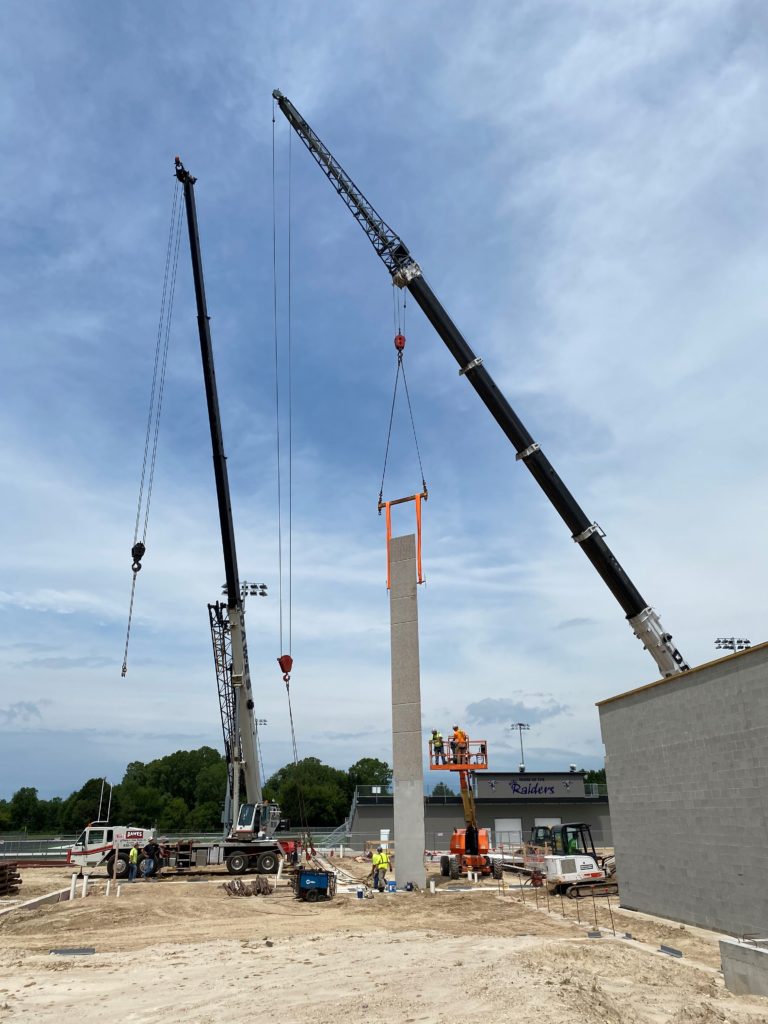Supply chain issues have caused a lot of angst for most Americans in recent years, but they are not the only challenges that impact our current construction environment. Increased costs and staffing shortages are other factors that will be game changers impacting your next construction project. Your choice of delivery and management of your construction or renovation project can have a significant impact on whether you’re able to start your project or not.
PRIMARY OPTIONS FOR CONSTRUCTION MANAGEMENT
It’s important to understand your options for delivery and management of your school’s next construction project.
With a Design-Bid-Build method there are three primary players: the owner (the school district), the architect/engineer, and the contractor. With this model, there are two separate contracts. One is between the owner and designer, and the other between the owner and contractor. The final contractor selection is based on the low bid or best perceived value.

Another method is called Construction Management at-Risk or CM at-Risk. The construction manager, who is often a general contractor, advises on both the design and construction phases of the project to ensure the costs remain below a set maximum price. If the construction project surpasses the determined limit, the construction manager may be liable for any costs greater than the agreed upon amount. With this approach, the project is divided into two distinct components: design and construction. A challenge with this delivery method is that it encourages practices to meet the price versus value and quality. As well, there is often a lack of transparency with bids, equipment rental costs, and sub-contractor markups.
The Design-Build approach consists of two primary parties, the owner and the Design-Build entity. There is a single contract between the school and either the contractor or the architect — who is then responsible for both design and construction.

Another method which is increasingly in demand is Integrated Project Delivery (IPD). This approach requires a single, multi-party agreement. It provides a single source of responsibility that eliminates finger-pointing, escalates accountability, and streamlines the building process. Additionally, this approach enhances the interaction between the school personnel, project stakeholders, planners, architects, and construction managers throughout the course of the project. IPD adds a layer of confidence by having all parties (architects, designers, constructors, etc.) contractually accept their share of the risk and responsibility.
A SHIFT HAS OCCURRED
In recent years, the construction industry has increasingly seen the value of using an integrated process like Design-Build and IDP. In fact, we are consistently seeing traditional general contractors making efforts to transition to construction management models. In some cases, general contractors will not even discuss design-bid-build anymore. This indicates a recognition that a collaborative process works.
Your choice of delivery and management of your construction or renovation project can have a significant impact on whether you’re able to start your project or not.
Integrated processes provide the ability to fast track, innovate, and increase project collaboration, according to Paul Trombitas, a senior consultant with FMI (Fails Management Institute). At Hoffman, we have seen these advantages benefit our clients for decades, and the value is clearly heightened during these challenging times.
REASONS TO USE AN INTEGRATED APPROACH:
A collaborative construction process can significantly benefit you. The IPD approach stresses brainstorming, collaboration, greater communication, planning, and consensus building. At the inception, it encourages all involved parties to look, with the greatest peripheral vision possible, for sensible and timely solutions to all issues including what we are currently experiencing with supply chain, staffing shortages, and increased costs.
Important items to recognize:
- Delaying a response to the current construction environment until bid time will be too late.
- Getting subcontractors involved early will help alleviate labor challenges by lining up projects in their schedules earlier.
- Designs may need to change to incorporate materials and systems that will be available when you need them.
- Adjustments may need to be made early to keep the project in budget.
TRUE COLLABORATION REAPS REWARDS
As you interview potential partners, be certain the conversation isn’t about the perception of taking a collaborative approach. Be certain you hire a firm with a proven track record. Talk with the firm’s past clients and find out how collaborative your partners truly are. Don’t be afraid to ask tough questions. Your project is costly and impactful. You need the best team and the most experienced team to make your project succeed.

EXAMPLES OF BENEFITS
A good example of the benefits of an integrated approach is a recent project at Wittenberg-Birnamwood School District in Wisconsin. The project included a new 7,200 square foot agricultural education building, improvements to the tech education area to address career training, and additions and renovations to the District’s two elementary/middle schools and its high school. Due to the IDP approach, the final cost was $1,300,000 under the $13.1 million pre-construction estimate. We were able to address needed updates and improvements not initially in the scope of the project, replacing corridor ceilings and upgrading to more efficient, LED lighting at both elementary schools. Additionally, we upgraded bathrooms and physical education storage, renovated the locker room at the high school, and added a maintenance garage.
The IPD approach stresses brainstorming, collaboration, greater communication, planning, and consensus building.
Another example comes from the School District of Manawa in Wisconsin. The final cost of the project, which featured the creation of a true middle school within the existing junior/senior high school, a new administration area, and a new two-story fitness center connected to the high school. Additional aspects of the project included a new parking lot and bus turnaround at the elementary school, as well as classroom remodeling, playground renovation, and mechanical systems upgrades. The final investment was $11.4 million, compared to a $12 million pre-construction estimate. This allowed the District to broaden the project scope and replace deteriorating curbs and gutters around the high school and remove and repave all high school parking lots and drives.
YOU CAN REAP THE BENEFITS TOO
By engaging with professional service providers for Integrated Project Delivery, you will likely benefit from improved collaboration, more cohesive communication, and a better understanding of construction schedules and costs. This collaboration increases the prospect of discovering viable opportunities to enhance the scope of work, giving school districts more for their money and helping to assure on-time project delivery.

